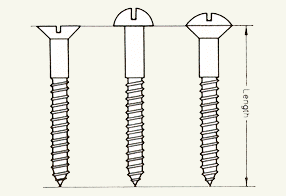Table 6 provides a listing of the different styles of screw heads that are available along with the features of each.
| Table 6 - Screw Heads | ||
 |
Bugle |
Common in wood screws as it provides for excellent countersinking in soft and medium soft woods and is generally the head used for drywall. |
 |
Flat |
Provides for a head that ends up flush with the surface of the wood. |
 |
Pan |
The flat bottom of the pan head screw provides for excellent grip in metal to metal fastening without the need for a large protruding head. Common application is steel stud to steel track fastening. |
 |
Round Washer |
The addition of an integral washer stops the screw from countersinking when fastening soft woods. |
 |
Trim |
Used for trim and casings when you need a screw that will countersink into the wood easily. |
 |
Round |
A general purpose screw head. Used when the screw head is visible. |
Table 7 provides a listing of the different styles of screw shanks that are available along with the features of each.
| Table 7 - Screw Shanks | ||
 |
Course |
The best grip in soft and medium soft woods. |
 |
Fine |
Has excellent holding grip in hardwoods and light gauge metal. |
 |
High / Low |
Most common application is for drywall screws. This thread does not strip easily when being driven into metal or wood. |
 |
Twin-lead |
Designed for faster installation, yet provides excellent grip and does not strip easily. |
Screw Lengths:
The length of a screw is measured from the widest point of the head to the tip of the screw point, as shown in Figure 3

Figure 3 - how to measure screw length
Table 9 provides a listing of the different styles of screw drives that are available along with the features of each.
Wood As Holding Material |
||
 |
Sharp |
Most common point for wood screws. Easy penetration in most soft and medium soft woods and other materials. |
 |
Spade |
The sharper point on the spade helps the screw to start and penetrate harder materials. |
| Metal As Holding Material | ||
 |
Winged |
The winged point provides a "drill" as the point of the screw allowing for easier penetration into hardwood and light metal. |
 |
Pilot |
Prevents screw jacking when attaching wood to metal. |
 |
Self Drilling |
The use of a self drilling point usually eliminates the need to pre-drill a pilot hole in the material. |
 |
Type 1 |
The advantage of a type 1 point is that it produces a machine gauge thread which allows for the replacement of the screw with a machine bolt. |
 |
Type 17 |
Cuts a thread through the wood as it is threading into the metal. |
